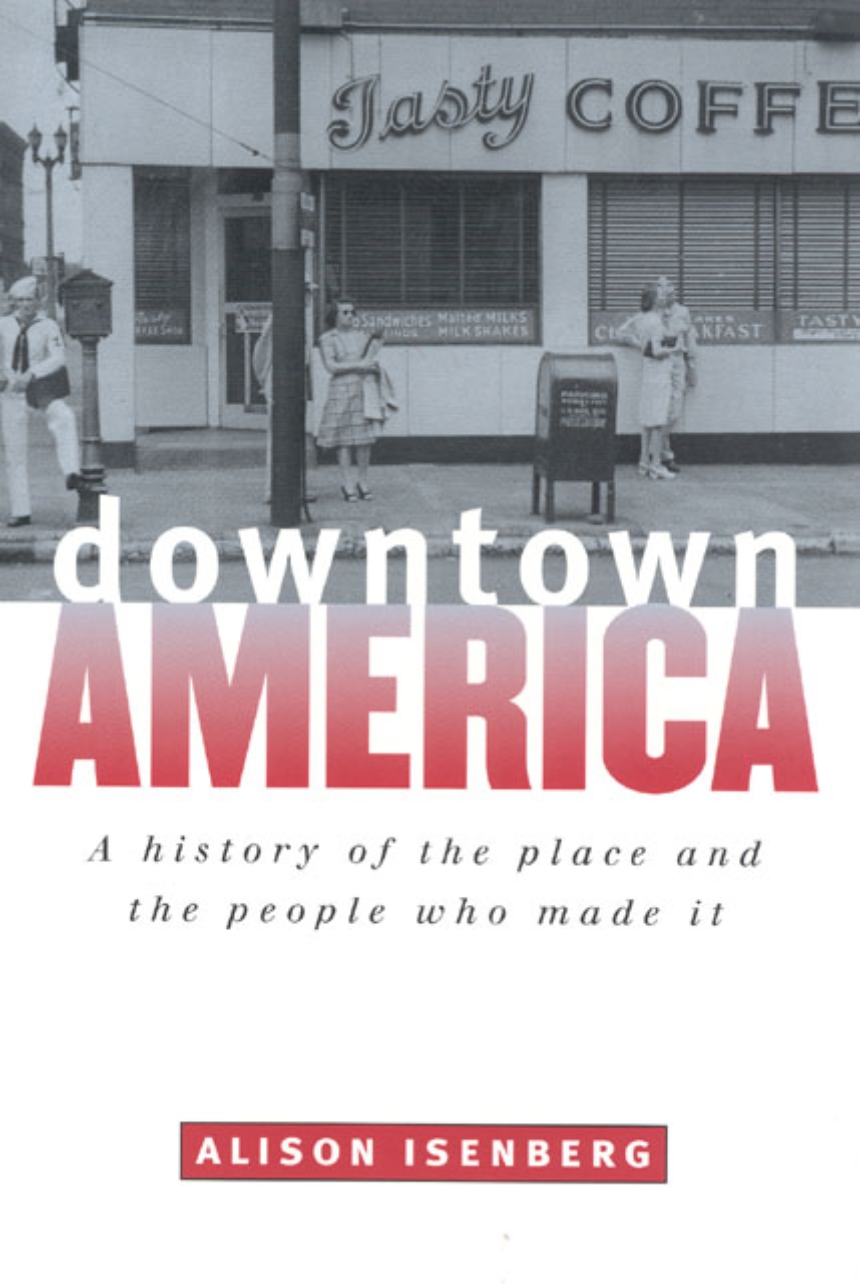Downtown America
A History of the Place and the People Who Made It
Downtown America cuts beneath the archetypal story of downtown’s rise and fall and offers a dynamic new story of urban development in the United States. Moving beyond conventional narratives, Alison Isenberg shows that downtown’s trajectory was not dictated by inevitable free market forces or natural life-and-death cycles. Instead, it was the product of human actors—the contested creation of retailers, developers, government leaders, architects, and planners, as well as political activists, consumers, civic clubs, real estate appraisers, even postcard artists. Throughout the twentieth century, conflicts over downtown’s mundane conditions—what it should look like and who should walk its streets—pointed to fundamental disagreements over American values.
Isenberg reveals how the innovative efforts of these participants infused Main Street with its resonant symbolism, while still accounting for pervasive uncertainty and fears of decline. Readers of this work will find anything but a story of inevitability. Even some of the downtown’s darkest moments—the Great Depression’s collapse in land values, the rioting and looting of the 1960s, or abandonment and vacancy during the 1970s—illuminate how core cultural values have animated and intertwined with economic investment to reinvent the physical form and social experiences of urban commerce. Downtown America—its empty stores, revitalized marketplaces, and romanticized past—will never look quite the same again.
A book that does away with our most clichéd approaches to urban studies, Downtown America will appeal to readers interested in the history of the United States and the mythology surrounding its most cherished institutions.
A Choice Oustanding Academic Title.
Winner of the 2005 Ellis W. Hawley Prize from the Organization of American Historians.
Winner of the 2005 Lewis Mumford Prize for Best Book in American
Planning History.
Winner of the 2005 Historic Preservation Book Price from the University of Mary Washington Center for Historic Preservation.
Named 2005 Honor Book from the New Jersey Council for the Humanities.
464 pages | 4 color plates, 91 halftones | 6 x 9 | © 2004
Historical Studies of Urban America
Economics and Business: Economics--Urban and Regional
Geography: Urban Geography
History: American History, Urban History
Political Science: Urban Politics
Sociology: Race, Ethnic, and Minority Relations, Urban and Rural Sociology
Reviews
Table of Contents
Acknowledgments
Introduction
Beyond Decline: Assessing the Values of Urban Commercial Life in the Twentieth Century
1. City Beautiful or Beautiful Mess? The Gendered Origins of a Civic Ideal
2. Fixing an Image of Commercial Dignity: Postcards and the Business of Planning Main Street
3. "Mrs. Consumer," "Mrs. Brown America," and "Mr. Chain Store Man": Economic Woman and the Laws of Retail
4. Main Street’s Interior Frontier: Innovation amid Depression and War
5. "The Demolition of Our Outworn Past": Suburban Shoppers and the Logic of Urban Renewal
6. The Hollow Prize? Black Buyers, Racial Violence, and the Riot Renaissance
7. Animated by Nostalgia: Preservation and Vacancy since the 1960s
Conclusion: "The Lights Are Much Brighter There"
List of Archival Collections
Notes
Index
Awards
Choice Magazine: CHOICE Outstanding Academic Title Awards
Won
Organization of American Historians: Ellis W. Hawley Prize
Won
Center for Historic Preservation - University of Mary Washington: Historic Preservation Book Prize
Won
Society for American City & Regional Planning History: Lewis Mumford Prize
Won
New Jersey Council for the Humanities: NJCH Annual Book Award
Won
